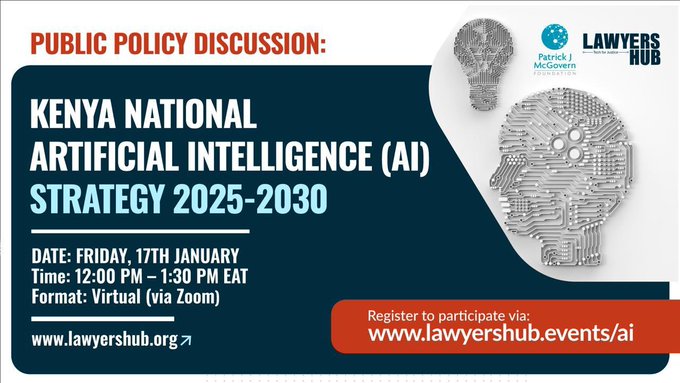NAIROBI, Kenya- In a dramatic move towards regulating Artificial Intelligence (AI), the Kenyan government is responding to growing concerns about its misuse, particularly among the youth.
The recent surge in AI-generated images and content expressing disapproval of the government has prompted the authorities to take action, culminating in the release of the Kenya National AI Strategy (Draft) for 2025-2030.
The government’s push for regulation aims to harness the power of AI while clamping down on its malicious use, especially when it’s used to target political figures or destabilize public order.
AI technology, once hailed as a tool for innovation and growth, has become a weapon of discontent among Kenya’s youth.
In recent weeks, political leaders have been shocked by AI-generated images depicting government figures in ways they find disrespectful.
These images, often circulated on social media, are part of a broader trend where young Kenyans use AI to voice their frustrations, with some even portraying politicians in coffins or other contexts.
🚨 AI & Policy Chat! 🚨 @MoICTKenya is inviting public comments on the draft Kenya National AI Strategy (2025-2030) – deadline is 19th Jan 2025!To help make sense of it all, the brilliant minds @lawyershubHQ have brought together the who’s who in AI for a deep dive.Don’t…
Interior Cabinet Secretary Kipchumba Murkomen has been vocal about the issue, condemning the use of AI to produce these controversial images.
On January 10, 2025, Murkomen called on parents and religious leaders to take responsibility for curbing what he described as “bad behavior.”
The Kenya National AI Strategy (Draft) for 2025-2030 aims to regulate AI to safeguard public order while leveraging its potential for economic growth.
One of the primary objectives is to develop a national framework that ensures AI is used ethically, without infringing on individuals’ rights or inciting violence.
A key part of the strategy includes the establishment of a task force to monitor AI developments and respond to emerging threats.
This task force will create guidelines to safeguard sensitive data, protect the rights of individuals, and prevent the spread of harmful AI-generated content.
Public Participation on the Draft
In a final call for public participation, the government is urging stakeholders, members of the public, and interested parties to submit their views, comments, and recommendations on the draft AI strategy, which will inform its final review.
Written submissions should be sent to the AI steering committee using the provided template by January 19, 2025, through the email aistrategy@moict.go.ke or via the official postal address.

Parting Shot
However, if AI regulations are shaped by political interests rather than a desire for balanced and ethical development, they could end up stifling the technology’s true potential.
Governments might be tempted to impose overly strict controls on AI as a means of quelling dissent or curbing political opposition, particularly in times of instability.
In such scenarios, the primary goal of regulation shifts from creating a safe environment to controlling narratives, restricting free expression, and limiting innovation.
Excessive political influence in AI regulation could lead to a climate of fear, where developers are wary of pushing boundaries or creating new technologies that challenge the status quo.
In this case, AI’s potential for societal benefit—whether in improving public services or advancing scientific discoveries—could be severely constrained by overly cautious, politically driven regulation.




